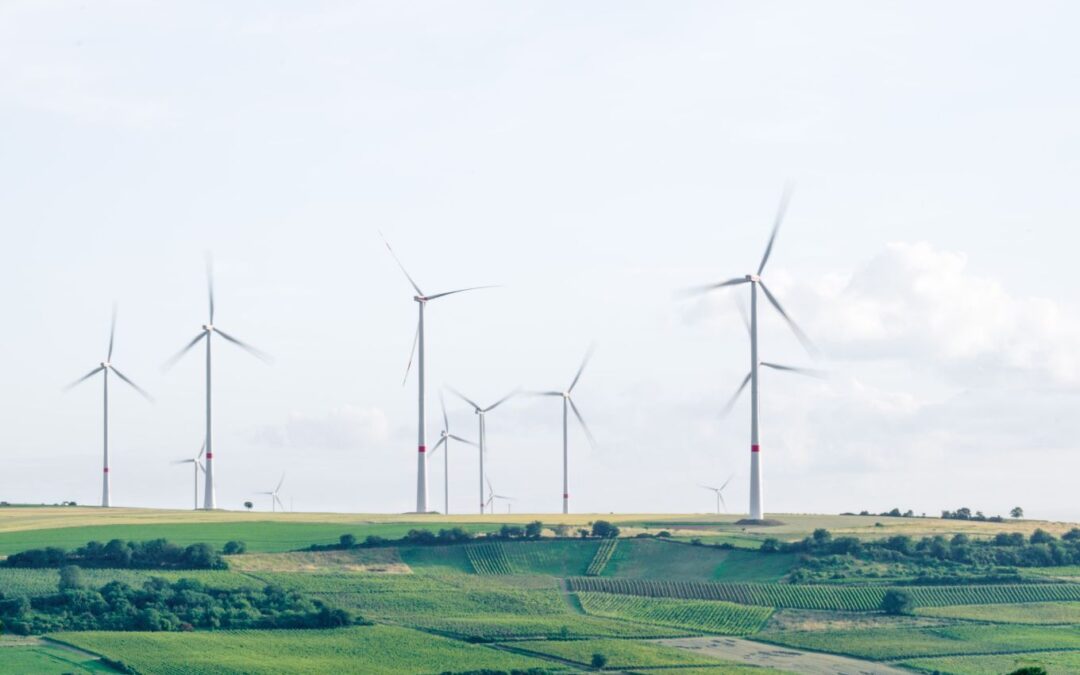The Minnesota Public Utilities Commission has set an “external planning meeting” for tomorrow, September 16, 2025 to hear significant changes to wind turbine siting in Minnesota. The proposed change has the potential to narrow the buffer zones between wind turbines and their neighbors.
In Minnesota, current policy is to provide a “wind access buffer” setback of 5 rotor diameters in the prevailing wind direction and 3 rotor diameters in the non-prevailing wind direction. The proposal before the PUC will reduce the standard setbacks to 1.1 times the total blade tip height. The argument goes that as Minnesota developers have begun to use bigger turbines, the 3×5 wind access buffer is overly restrictive.
Here’s a concrete example (and please forgive any errors in this napkin math): consider a Vestas V150-4.2MW wind turbine, which has a rotor diameter of 150 meters and a recommended hub height of 155 meters. Under the current 3×5 rule, the setback would be 750 meters (2,461 feet) in the prevailing direction and 450 meters (1,476 feet) in the non-prevailing direction. Under the revised rule, the blade tip height would reach 230 meters, so there would be a setback of about 253 meters (830 feet). For a nonparticipating landowner, this change would be like moving a turbine from the far side of eight football fields away — to just under three football fields.
The presentation to be given tomorrow is available here and so is a handout with similar material. The handout shows two examples of the allowable setbacks and buildable land under the current policy as well as the proposed 1.1x blade tip height. It becomes clear that the 1.1x blade tip height standard would bring wind turbines much closer to nonparticipant property lines than before, perhaps two to three times closer to property boundaries in some cases.

This proposal may, in effect, expose neighbors to greater nuisance exposure and reduce the ability of neighboring landowners to negotiate favorable voluntary participation agreements. Wind turbine developers will be able to avoid negotiating with as many neighbors and could constrain the abilities of neighbors to build near their own property lines.
The presentation is being made by the Clean Grid Alliance and American Clean Power. In 2023, the Clean Grid Alliance (formerly known as Wind on the Wires) received $3.95 million in contributions, with members in 2022 including Invenergy and Fresh Energy. Invenergy is a Chicago-headquartered wind and solar developer. Fresh Energy is a 501(c)(3) nonprofit whose mission is to “to shape and drive bold policy solutions to achieve equitable carbon-neutral economies.”
Funnily enough, the only “stakeholders” given an opportunity to comment at the meeting are representatives from Invenergy and Fresh Energy (both members of the Clean Grid Alliance), the Laborers’ International Union of North America (LIUNA) MN & ND, and the Rural Minnesota Energy Board (which spent $18,000 in lobbying the legislature in 2024).
Where are the stakeholders representing citizens? Ratepayers? Property owners? Anyone who isn’t fully on-board with building more wind turbines?
The live webcast can be viewed at this link tomorrow, September 16, at 10 a.m. Unfortunately, there is no docket number (or at least, not yet) with which the public may submit public comments. However, the email address for the PUC is [email protected].

